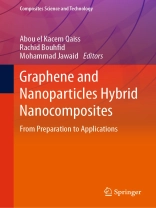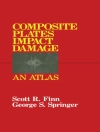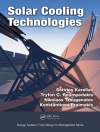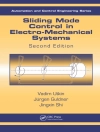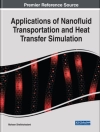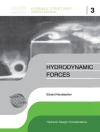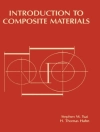This book covers the recent research on nanomaterials and nanotechnology based on the hybridization of graphene with other nanoparticles. With their simple synthesis, nanoscale dimensions, high aspect ratio, mechanical, electrical and thermal properties, graphene and its hybridized materials have witnessed a great interest, and the chapters in this book cover the spectrum of research from the preparation and synthesis of novel nanocomposites to their potential use in aeronautic, automative, energy and environmental applications. Written by respected researchers from both industry and academia, this book is of interest to researchers and students working on nanomaterials.
Inhoudsopgave
Chapter 1: Generality of hybridization at the nanoscale: from design to applications.- Chapter 2: Preparation of graphene and its derivatives.- Chapter 3: Characterization techniques for hybrid nanocomposites based on graphene and nanoparticles.- Chapter 4: Hybrid nanocomposites based on graphene and carbone nanotubes: from preparation to applications.- Chapter 5: Hybrid nanocomposites based on graphene with cellulose nanocrystals/nanofibrils: from preparation to applications.- Chapter 6: Hybrid nanocomposites based on graphene and nanoclays: from preparation to applications.- Chapter 7: Hybrid nanocomposites based on graphene and silver nanoparticles: antibacterial applications.- Chapter 8: Hybrid nanocomposites based on graphene and gold nanoparticles: from preparation to applications.- Chapter 9: Hybrid nanocomposites based on graphene and titanium oxides: photovoltaic applications.- Chapter 10: Hybrid nanocomposites based on graphene and zinc oxides: biosensor applications.- Chapter 11: Hybrid nanocomposites based on graphene and ferrite nanoparticles: from preparation to applications.- Chapter 12: Hybrid nanocomposites based on functionalized graphene and other nanoparticles: from preparation to applications.- Chapter 13: Hybrid nanocomposites based on graphene and its derivatives: from preparation to applications.- Chapter 14: Rheological properties of hybrid nanocomposites based on graphene and other nanoparticles.
Over de auteur
Dr. Abou el kacem Qaiss is Director of the Composites Nanocomposites Centre at the Moroccan Foundation for Advanced Science, Innovation and Research (MASc IR), Institute of Nanomaterials and Nanotechnology (Nanotech) in Rabat (Morocco). He received his Ph.D. from Université Laval, Québec, Canada. He has more than 20 years of experience in teaching, research and industries. His research areas of interest include hybrid-reinforced/filled polymer composites, advance materials: graphene/nanoclay, lignocellulosic reinforced/filled polymer composites, modification and treatment of lignocellulosic fibers, nanocomposites and nanocellulose fibers, as well as polymer blends. So far, he has published three books, 30 chapters and more than 75 international journal papers and holds 25 patents.
Dr. Rachid Bouhfid is Researcher at the Moroccan Foundation for Advanced Science, Innovation and Research (MASc IR), Institute of Nanomaterials and Nanotechnology (NANOTECH), Rabat, Morocco. He obtained his Ph.D. in Organic Chemistry from Mohammed V University, following which he joined Artois University, France, as ATER, and then became Assistant Professor. Dr. Rachid Bouhfid’s research is mainly in the field of organic synthesis of functional molecules to use them as modifiers of inorganic fillers and the development of new polymeric nanocomposites based on clay and nanoclay, graphene and nanocrystalline cellulose. So far, he has published 3 books, 30 chapters and more than 120 international journal papers and holds 25 patents
Dr. Mohammad Jawaid is Senior Fellow (Professor) at the Biocomposite Technology Laboratory, Institute of Tropical Forestry and Forest Products (INTROP), Universiti Putra Malaysia (UPM), Serdang, Selangor, Malaysia, and also has been Visiting Professor at the Department of Chemical Engineering, College of Engineering, King Saud University, Riyadh, Saudi Arabia, since June 2013. His areas of research interests include hybrid-reinforced/ filled polymer composites, advance materials: graphene/nanoclay/fire retardant, lignocellulosic reinforced/filled polymer composites, modification and treatment of lignocellulosic fibers and solid wood, biopolymers and biopolymers for packaging applications, nanocomposites and nanocellulose fibers, and polymer blends. So far, he has published 34 books, 60 book chapters and more than 350 peer-reviewed international journal papers, in addition to having served as Guest Editor of special issues of Peer Reviewed journals.
